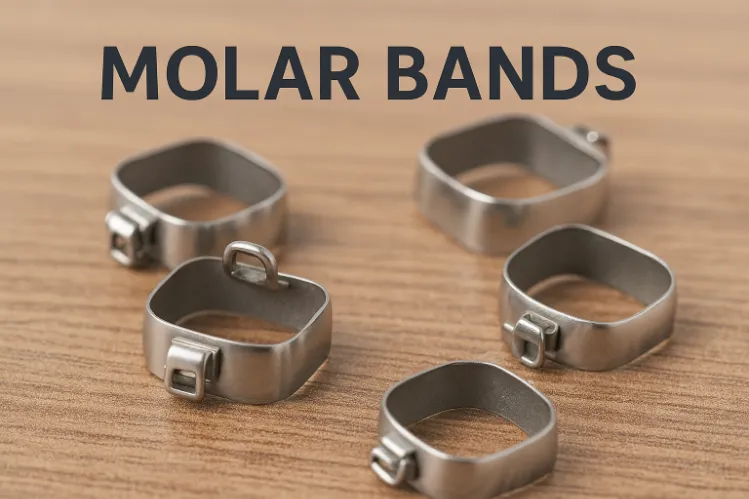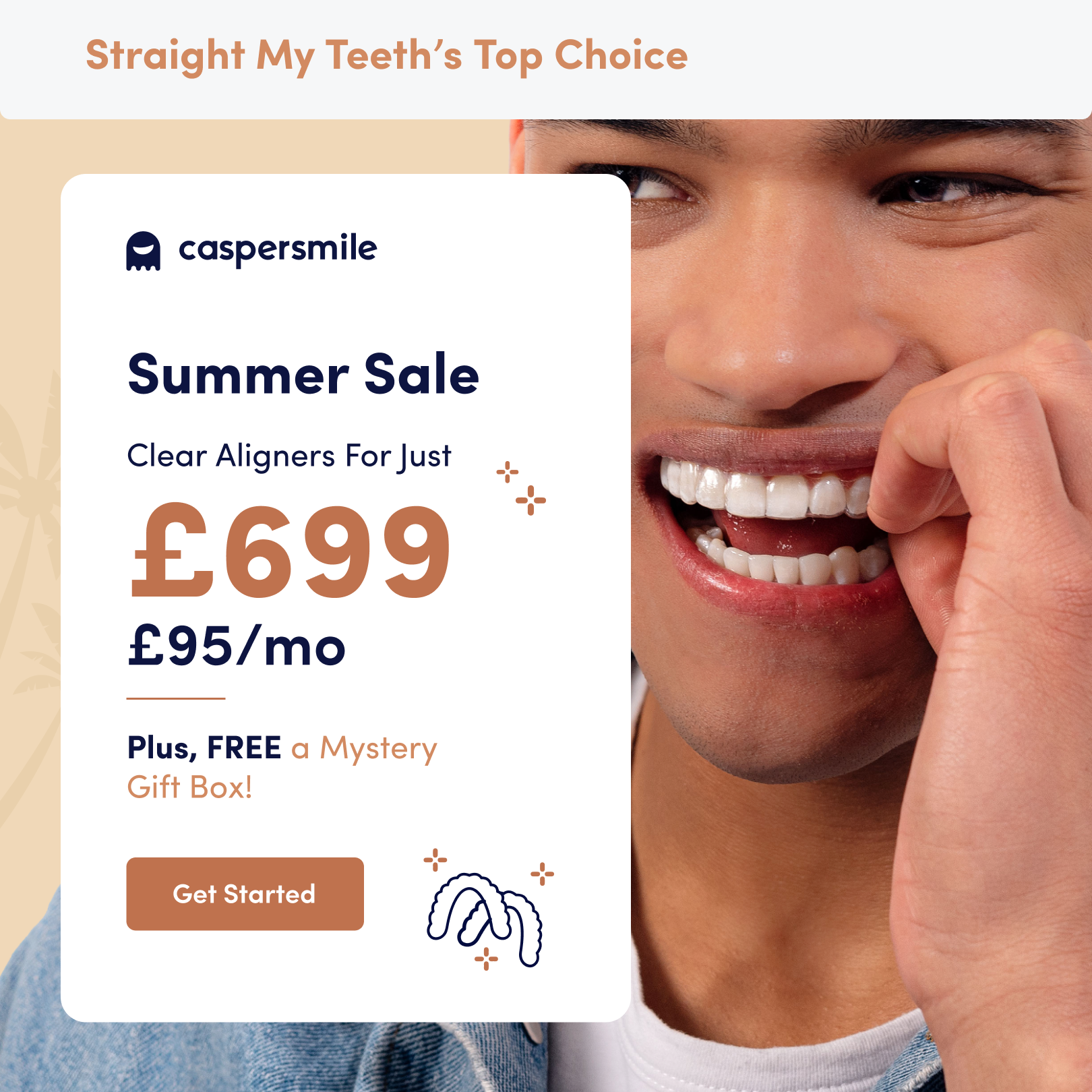.jpg)
Table of Content
Whether you opt for clear aligners or fixed braces, you’ll no doubt be glad to have finished treatment and are now sporting a straighter smile you can be proud of. However, this isn’t the end of the story. You will still need to wear a device known as a retainer. Like orthodontic braces or clear aligners, dental retainers are custom-made devices that can be either fixed or removable.
In this article, we’re going to look at the pros and cons of fixed retainers vs removable retainers to see which is best for you.
Retainers typically need to be worn in the following circumstances
The most common type of fixed retainer consists of a wire bonded to the back of the teeth. In most cases, a retainer is worn full-time for the first 6-12 months following the end of orthodontic treatment, then nights only for as long as needed.
Unlike removable retainers, you cannot misplace or forget to wear your fixed retainer.
One of the benefits of fixed retainers is that they cannot be removed. If you have difficulty adhering to their guidelines for removable retainers, a fixed retainer may well be a better option.
Fixed retainers are attached to the teeth by a dentist in a procedure that may take up to an hour to bond the retainer to the teeth and could be uncomfortable. Furthermore, you will need to visit the dentist regularly so they can check your retainer and examine your teeth and gums for signs of dental health problems.
Fixed retainers are typically made with a metal wire that can be uncomfortable if the tongue rubs against it. Furthermore, if the wire breaks, it can scratch the tongue and irritate.
Eating some foods may damage the wire by bending it out of shape. You may have to consider changing your diet to ensure that your retainer is not harmed. Likewise, consuming sticky, sugary food and drinks can stick to the retainer, making it difficult to clean. This may have a detrimental effect on keeping the mouth hygienic and increase the possibility of tooth decay (dental caries) and gum disease (periodontitis).
Fixed retainers may require changes to your teeth cleaning routine. Regular flossing is not possible, and you may have to invest in interdental brushes or floss (water) picks that can get behind the wire of the retainer and in between the gaps in the teeth at the gum line. The likelihood is that your cleaning routine is going to take longer.
Removable retainers are similar to clear aligners. They are custom-made from a transparent plastic-like material moulded to fit over the teeth, rather like a mouthguard.
Removable retainers are clear and undetectable in the mouth—so there is no need to be embarrassed about wearing a dental appliance as only you will know.
The smooth, clear plastic of removable retainers is comfortable compared to the stainless steel wire and brackets that fixed retainers are made from. Moreover, removable clear retainers won’t irritate the cheek or tongue.
As you can take removable retainers out of your mouth, they are easy to keep clean. Simply remove them when eating or drinking anything besides water and be sure to at least rinse your mouth with water before you put the retainer back in your mouth if you cannot clean your teeth.
Because you can remove your retainer, there is no need to change your diet to prevent damage to your appliance.
With removable retainers, you can continue with your regular brushing and flossing routine. Brush and floss your teeth before you put your retainer in and when you take it out for the day. This typically corresponds with twice-daily brushing and flossing every morning and night before you go to bed.
You don’t have to go to the dentist to fit a removable retainer. In fact, with some at-home clear aligner brands like Caspersmile, you can receive your retainer when you purchase a teeth straightening kit.
If you suffer from bruxism (teeth grinding or jaw clenching) when you sleep, a removable retainer can also help prevent damage to your teeth or dental restorations as it prevents the surfaces of your teeth from grinding together.
If you are not likely to wear your retainers as instructed, are likely to forget to wear them, or are prone to losing items, removable retainers may not be the best option for you. If you have had orthodontic treatment, you don’t want to undo years of work by not completing the treatment by wearing removable retainers.
Clear retainers must be cared for properly. They can become warped if exposed to heat—so do not clean them by placing them in hot water. Additionally, they may become stained if you smoke or if you eat or drink some foods and beverages (the general rule is that anything that stains your clothes can stain your retainer). To be on the safe side, it is best to stick to water when you are wearing removable retainers.
In summary, removable retainers have many benefits over traditional fixed retainers. If you go to a dentist, removable retainers tend to be more expensive than fixed retainers, but the convenience and ease of use typically outweigh the cost for most people.
However, there are a lot of direct-to-consumer brands that offer a revolutionary new way to straighten your teeth at a fraction of the price a dentist charges. Furthermore, some of them give you the option to receive a set of free retainers at the end of your treatment, to ensure your teeth stay in their new, straight position.
Curated the best for your knowledge
.png) Metallic Taste in Mouth: Causes and How to Get Rid of It
Metallic Taste in Mouth: Causes and How to Get Rid of ItHaving metal taste in the mouth first thing in the morning can be an unexpected experience. You wake up, take a swallow, and suddenly have a metallic taste in your mouth, as if you'd been chewing on a handful of change. It's annoying, a little scary, and sometimes for no apparent reason. For some people, it will be nothing but a minor nuisance; others may fall into the late-night goose chaser. Sometimes it's a sign that there is something wrong with your braces; other times, it could mean that there is something wrong with one of your teeth. But here's the good news: Most metallic tastes are temporary, harmless, and can be treated or resolved. So let's take a closer look at the possibilities.
Read More How Molar Bands Work in Braces and Retainers to Keep Your Teeth in Line
How Molar Bands Work in Braces and Retainers to Keep Your Teeth in LineIf you’ve ever started orthodontic treatment, you already know there are a lot of tiny pieces involved. Wires, brackets, elastics, retainers, attachments… and then there are molar bands. They’re not as famous as braces themselves, but they play a surprisingly big role in keeping your smile moving in the right direction. Some people don’t really notice them. While others desperately want to know why that metal ring is even there. So let’s break it all down: what molar bands are, why orthodontists use them, and how they work in both braces and retainers. Plus, what you should expect throughout the process.
Read More.webp) Dental Bonding Cost: Prices, Process & What to Know
Dental Bonding Cost: Prices, Process & What to KnowIf you’re thinking about fixing a chipped tooth, closing a gap, or smoothing out uneven edges, dental bonding is often the easiest (and quickest) way to do it. And honestly? It’s one of the most budget-friendly cosmetic treatments out there, if you know what to expect. But here’s the part everyone worries about first: “How much does tooth bonding cost?” The short answer: it depends. The long answer: let’s break it all down so you actually understand where the price comes from, what you’re paying for, and whether bonding is the right fix for your smile.
Read MoreQuick Links

Heading